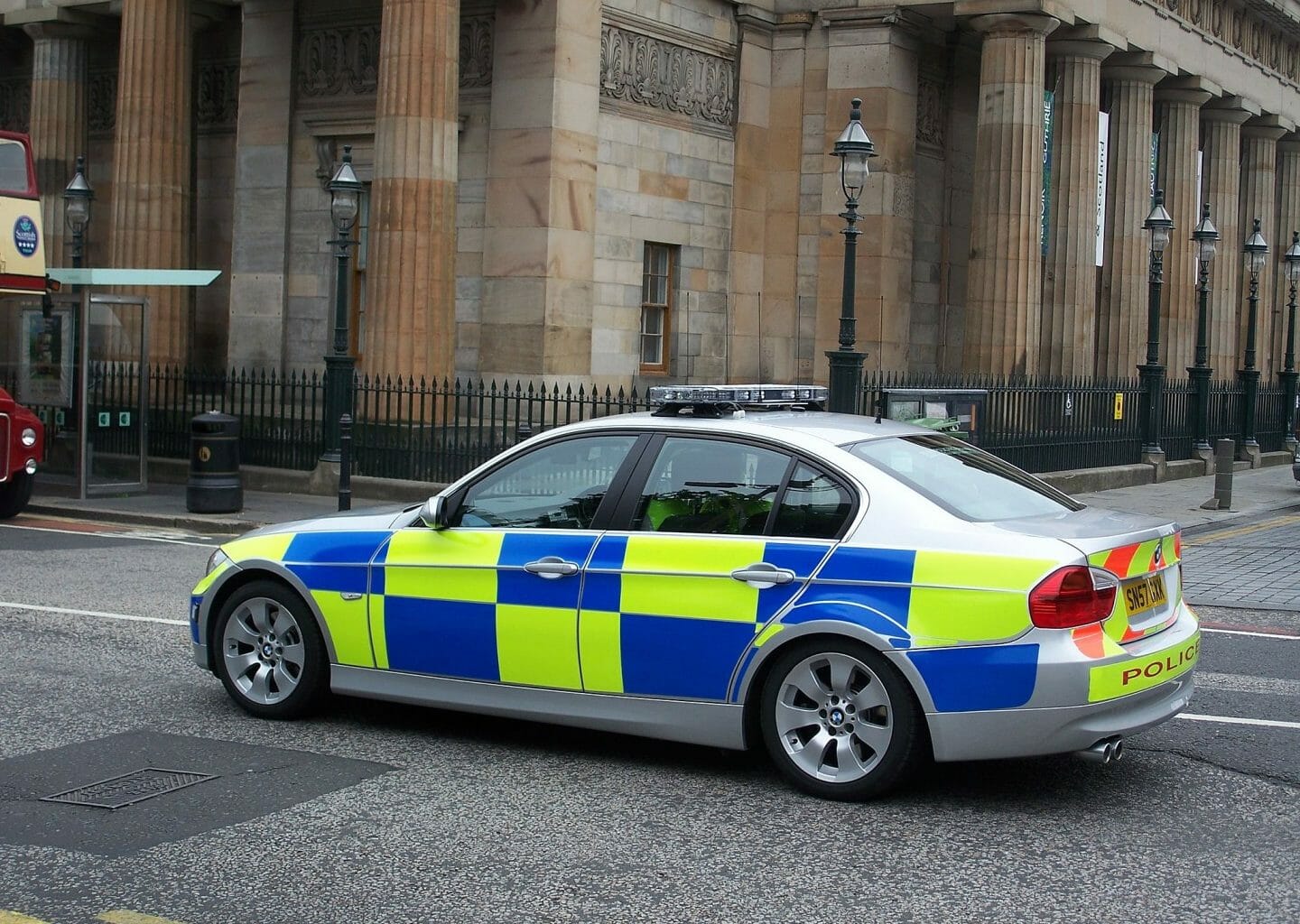The number of police officers on Scotland’s streets in some parts of the country has almost halved since 2011 with traditional “beat bobbies” non-existent and the situation for local policing “critical”, according to the Scottish Police Federation.
Cutbacks have resulted in the closure of custody suites, officers being taken off the streets and put into control rooms, and police left struggling to cover traffic accidents, football matches and music festivals.
The Scottish Police Federation (SPF) is warning that policing in cities and rural areas is under immense strain with officers struggling to cope and that Police Scotland may not be able to deal with a major incident in the future.
Earlier this month it emerged that the number of police in Scotland had fallen to its lowest level since the end of 2010 with 17,242 full time officers.
The Scottish Government said then that crime was at a 41-year low and that Scotland was as safe as it had been for more than a generation.
However, the SPF said there is a “real likelihood the service could fail or fracture” while a senior police officer in Tayside described the situation as “shambolic” with the traditional model of policing having been “dismantled” in recent years.
The SPF said that Operational Base Levels (minimum staffing levels for safe policing) in the east of Scotland currently stand at – 38 officers per shift in Edinburgh, 34 in Fife, 30 in Forth Valley and 47 for Lothian and Scottish Borders – which amounts to a minimum of 149 officers to police nearly one third of the nation’s population.
“Prior to 2011, Edinburgh used to have 70 officers per shift (minimum) so that’s almost 50 per cent down,” said Brian Jones, chair of the East Area Committee for the SPF.
He added: “These figures came from our members. The biggest concern that we have in the east is actual availability of police resource right now. If I’m in the Scottish Borders, how many cops have I got there to deploy to any form of incident? Numbers are significantly reduced to what they were prior to the introduction of Police Scotland.”
“In a rural community of just under 2000 square miles of Scottish Borders – on operational base level, a number we didn’t normally go below for safe policing – there was one inspector, three sergeants and 21 constables. Today that figure has been reduced to two sergeants and 12 constables.”
Regarding traffic police for the Scottish Borders, there used to be three sergeants and 18 officers but Jones said cover has been reduced to one sergeant and 12 constables.
City of Edinburgh traffic police used to have one chief inspector, two inspectors, five sergeants and 40 constables. Now there is one inspector, three sergeants and 18 constables.
Since 2011 resources for policing in the east of Scotland have been cut by almost 50 per cent, a result of cost cutting after the financial crash followed by a centralisation of resources following the merger in April 2013 of the former eight police forces into Police Scotland.
Jones said: “You haven’t got the resource to enable the beat bobby to do the walk because they are too busy, so you have response officers. The best way of describing it is you have a group of demented ants, or flying ants, flying from one area to the next, not having the time to think or engage.”
“They don’t have the time to build up partnerships and relations which, prior to the inception of Police Scotland, we were very good at across the country. Local policing – the numbers actual on the street on a day to day basis – in rural communities has shrunk beyond anything you could expect. Cops are burning themselves out to cover the gaps.”
A senior police officer in Tayside, speaking on condition of anonymity, described the situation in Dundee and Perth as “critical” because officers were being put back into control rooms, a policy known as back-filling.
The officer said: “There is not one single beat left in Dundee. Beats don’t exist anymore. This was a result of Operation of Mithril which dismantled the traditional policing model in Dundee. Resource deployment for Dundee is now organised by Aberdeen. This doesn’t work.”
“It is chaos and Dundee custody nearly had to close recently because of staff shortages. Also, a critical incident was declared recently because resource deployment is such a mess. There were not enough resources for T-In The Park recently.”
“We knew for a year it was coming and we’ve policed it 19 times before. Police in Perth were struggling to cover the recent St Johnstone-Hearts game. It’s shambolic.”
David Hamilton, chair of the North Area Committee of the SPF, said the Barrack Street police station in Perth had to close recently due to staffing issues, while Martin Bertram, chair of the West Area Committee of the SPF, said many of the above problems were mirrored in the west of Scotland.
Bertram added that custody suites are regularly shutting down for periods because of insufficient staff.
He said: “So, what happens if someone is arrested in Paisley is that they may have to be taken to Clydebank or Govan or Greenock because Paisley is closed. It’s quite common. Back-filling is another problem.
“These are operational pressures we work through, and we get that, but when we’re strapped at the frontline as it is, it’s getting thinner and thinner and thinner…breaking point is probably past and gone. I would suggest it’s well broken.”
Brian Gordon, a councillor for the north east area of Dundee, said: “Police have been pushed into a corner. They are now sitting doing office jobs. If you speak to constables they’re not happy with that either but they can’t speak openly because they are that worried about their job. “
Douglas Ross, Scottish Conservative shadow justice secretary, said: “Police officers do a fantastic job, and regularly put their own safety on the line for the sake of the public. However, it’s increasingly clear that they are not being backed up by either Police Scotland or the Scottish Government.”
“These revelations are alarming both to officers and people in general . It’s simply unacceptable in a country such as ours to have a police force which many fear is not ready for a major event.”
“A theme is now very much running about a single police force which is struggling to cope with the everyday demands of policing. That requires the SNP to address this as a matter of absolute urgency.”
A spokesman for the Scottish Police Authority said: “There are two key factors facing policing in Scotland. First, the demands placed on policing are changing, as is the reality of the tasks and services being carried out on a daily basis.”
“We are starting to understand that better within policing, for example around caring for vulnerable people at times of crisis, but there is a need for policing to convey and discuss that more widely with the communities it serves.”
“Second, services like policing are also operating within public resources that have limits. The reality of that is that every call for additional resources in one area is in effect a call to reduce funding elsewhere. So we need to have a mature conversation which is about choices and priorities, and not simply about finding more.”
“When considered against those factors, policing in Scotland has had a good financial settlement, which requires it to operate within a budget this year that is broadly equivalent to what policing cost last year. No one in policing doubts that this still requires considerable work and effort – in the short term to live within available means but also to prepare for the longer term.”
“That is why the SPA and Police Scotland have initiated a strategic programme of work aimed at building a flexible and sustainable police service. That will deliver a clear long-term vision, strategy and organisational blueprint for policing now and over the next 10-years.”
“Change will not happen overnight and that is why the historically high levels of police officers we have now will be maintained, until that informed and evidenced direction for the future is in place.”
“However, our objective is that as we move through the lifetime of this Parliament we will deliver a transition to a Police Scotland that has the capacity and capability to deliver a quality service to meet those changing needs and do so in a sustainable way. Sustainable for policing, but sustainable also for the wider public services.”
A Scottish Government spokesperson said: “Scotland’s police officers and staff continue to deliver an excellent service, supported by the 1,000 extra officers we have delivered compared to 2007. This compares with a near 13% fall in police officer numbers in England and Wales over the same period.”
“Crime is at a 41 year low and the 2014/15 Scottish Crime and Justice Survey shows that confidence in the police is high and that in every police division, the majority of survey respondents said that the police were doing a good or excellent job in their local area.”
“We are committed to protecting the police revenue budget in real terms, delivering an additional £100m of investment by the end of this Parliament, in addition to £55 million of reform funding in 2016-17.”
“Clearly, it is for SPA and Police Scotland to determine the best possible use of the budget according to national and local priorities. All areas of Scotland now have more consistent access to a range of national and regional resources as a result of the creation of Police Scotland.”
Scottish Labour’s Justice spokesperson Claire Baker MSP said: “From the closures of local front desks, to the absence of ‘bobbies on the beat’, communities across Scotland are seeing first-hand the impact of the SNPs cuts to Police Scotland .
“Rather than having a balanced national police force we are beginning to see a picture of an asymmetrical Police Scotland, with certain parts of the country being hit harder than others. For people living in the east and rural Scotland these reports will paint a worrying picture.”
“Questions must be asked of how often Police Scotland regional divisions have fallen below operational base level. We must ensure that Police Scotland’s resources are being directed to the right areas and that no part of Scotland is left feeling short changed.”
Deputy Chief Constable Iain Livingstone said: “We carefully manage our resources at local, regional and national level to deal with the priorities of our communities, emerging threats and risks, major events and public demand. Overall, officer numbers have remained constant, and information is regularly published detailing the resources we have available throughout the country.”
“Since the start of Police Scotland, officers and staff have consistently delivered excellent policing at a number of major events and responded to major incidents and investigations. Police Scotland has more capacity and capability to deal with major incidents than any single previous legacy force.”
“The structures brought into place in 2013 delivered equity of access to specialist services in support of local policing across Scotland.”
“Individual Divisional Commanders are responsible to their communities and as such are empowered to deploy resources according to the needs of their communities.”
“Local policing is at the core of Police Scotland, and this is supported by a range of specialist services which have a footprint throughout the country.”
“We will engage with staff associations, including the Scottish Police Federation and unions to deliver high quality policing within our budget.”
An abridged version of this story was published by The Sunday Times on 21st August 2016.














